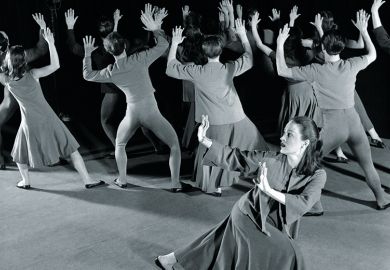Imagine you’re in the final year of postdoctoral work. You’ve had a few projects on the go and your work is progressing rather well, and now one of these projects is yielding especially satisfying results. You’re convinced that you have a particularly unexpected and intriguing chapter to add to your research field.
You already have the first draft of the manuscript. It’s still rough, and your collaborators and lab fellows are now poring over the text and figures. “What now?” you ask yourself. Should you simply finalise the manuscript and submit? But what to include in the cover letter? And should you try to reach out to an editor in person too?
What follows here are words of advice from me and my colleagues at Nature on how best to pitch to an editor. The advice of course applies to any editor on any journal.
The most important thing to remember is not to be intimidated by the business jargon that has crept into the way we talk about communication between editors and researchers. The term “elevator pitch” can be just as off-putting to you as a researcher as it is to an editor; after all, many editors are academics themselves while professional editors, like me, were active researchers at some point.
The strength of the work will often speak for itself but researchers can do a lot to enhance the message. Clarity on what exactly was done, how something was discovered and why the results are important is paramount. The editor will appreciate knowing or being reminded about how the new findings fit within the broader background of this field, how they advance the field and what potential future avenues of investigations have opened up.
The editor will often be asking herself or himself the following questions: is the work an important resource for the field? Is it answering a long-standing puzzle or overcoming a roadblock? Is the question being answered of key and broad interest? Will the finding open doors to future work? Does the work have important practical implications?
Research findings don’t have to be in a “hot” field to be significant, and they don’t need to break records. They can be significant because of how they are likely to change the way that others will think about a problem or change the direction of future enquiry.
Although most professional editors become specialists in a given field, their focus tends to be broader than that of a researcher. As one of my editorial colleagues said: “We know a little about a lot, not a lot about a little.” So when pitching to us it is important not to get lost in too much detail but instead to provide a broad context to the findings.
Context is indeed important, as is an honest explanation of how the new work fits within it. The editor will check the related literature, so if there are previous publications that impact novelty it is much better to acknowledge them and to explain how the new work is different.
Providing endorsements from prominent researchers in the field should be avoided; unfortunately, it tends to have the opposite effect of the one intended. The editors will want to make their own assessment of the work, based on the facts provided. Hype is easily detected and is definitely not helpful. In fact, what helps enormously is to make it clear exactly how confident the authors can be about each of their conclusions.
Editors are passionate about science and will be excited about impactful and/or elegant research. I encourage researchers to take advantage of this enthusiasm and when speaking to an editor in person to try to lead them into asking questions about the work that is being discussed. This is a simple but general principle – get your audience interested in what you have to tell them.
I would even go further and say why not tap deeper into the passion that editors have, by telling them which part of your findings you are most proud and excited about, and why?
All these recommendations are equally applicable to whether you are telling the editor about your work in a cover letter, over the phone or in person – for example at a conference. I always encourage researchers to speak with editors about a forthcoming manuscript submission if there is an opportunity to do so.
Regardless of how the message is put across, researchers should never feel that if they are at an early stage of their career they have less chance of gaining the editor’s attention. Editors want to publish the most interesting and important research and they are waiting for you – whichever stage of your career you’re at – to tell them all about your latest findings.
Magdalena Skipper is the editor-in-chief of Nature. She has previously served as an editor of Nature Reviews Genetics and Nature Communications.
POSTSCRIPT:
Print headline: How to get your article ready for take-off
Register to continue
Why register?
- Registration is free and only takes a moment
- Once registered, you can read 3 articles a month
- Sign up for our newsletter
Subscribe
Or subscribe for unlimited access to:
- Unlimited access to news, views, insights & reviews
- Digital editions
- Digital access to THE’s university and college rankings analysis
Already registered or a current subscriber?








